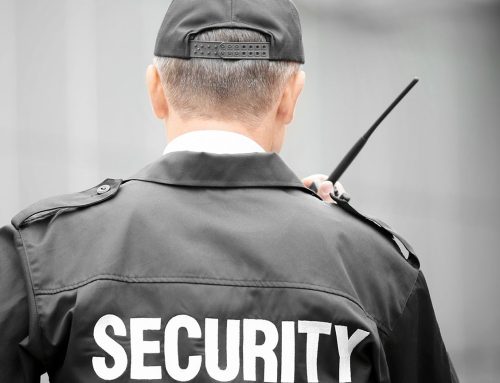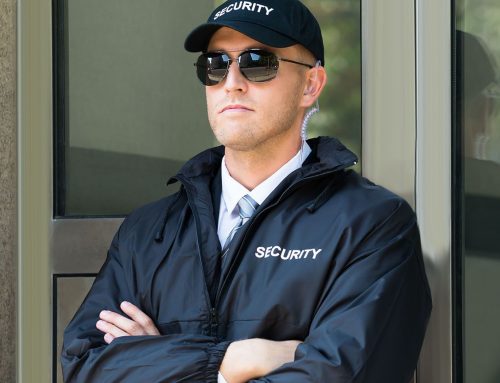There are three major divisions of security – management, operational and physical. These divisions work hand-in-hand to protect any business from getting damaged by unauthorized external forces or individuals. Learning the different divisions is important for any business so that sensitive data or information will not be in the wrong hands. Though intruders are inevitable, it is best to be vigilant and know how to mitigate the risk of damage.
The 3 Divisions of Security
Management Security
Management security is also referred to as administrative controls. To have a secure environment, there must be coherent rules, guidance and procedures. Aside from protecting a company’s data and network, this division of security helps develop plans so that the core operations will not be damaged by the event of a security attack.
Management security is used to handle threat assessment, information classification or categorization, risk assessment and analysis. This is very important as it touches on the two other divisions of security which also involves information security.
Operational Security
Also referred to as procedural security, operational security was originally used by the military sector to protect confidential information from leaking out into the public. This is a risk management process which entails managers to check on the operations to make sure that any sensitive information does not go to the wrong hands. Aside from checking the operations, this division of security is also used to monitor social media sites by the private company.
Steps of Operational Security:
- Identify confidential data or information
To be able to prepare, identify sensitive information which may include financial statements, customer data sheets, employee information, product research and other intellectual properties. Resources must be focused on these data to ensure security.
- Check for possible threats
Identify any single possibility of threats present in the company or organization. This can be third parties who try to steal crucial information, or negligent employees and irate workers who may become insider threats.
- Analyze vulnerability and security lapses
Check and assess the present security within the company. Determine if there are any lapses or loopholes that may be easily exploited to get the company’s sensitive information.
- Rank level of risk for each vulnerability
If a vulnerability is detected, ranking this based on different factors such as the possibility of an attack, extent of damage, work and time needed to get back up. If an attack is projected to have great damage, more preparation is needed to mitigate the risk that comes along with it.
- Set up countermeasures
To minimize and eliminate threats plus mitigating risks, a plan is needed. An example would be updating the company’s hardware. Another way would be to train employees on safeguarding the practices and policies of the company.
Operational security is best achieved if there is restricted access to all devices in the company’s network. As such, employees must have minimal access to protect the sensitive data within the company. Reducing human intervention can be made possible by having automated tasks. Finally, there must be fast intervention and a recovery plan to have a sound security position.

Physical Security
Physical security is what the modern business owner needs nowadays. As everything relies on technology, threats can come from hackers and other business breaches. Physical security is needed to protect data, hardware and personnel from unwanted threats that could create great damage in the business operations. Different types of threats can be fraud, theft and vandalism. As such, countermeasures must be set to avoid intrusion in a company’s:
- website design
- training
- access control
- intrusion detection
- emergency response readiness
Components of Physical Security:
- Deterrence
These can be physical barriers that restrict entry into the company’s place of business. Technology may be in the form of video security cameras and access control systems. All of these keep unauthorized individuals from accessing entry to the company.
- Detection
Deterrents are not enough to physically secure the place of business. Sensors, alarms and other notifications help detect any intruder from penetrating into the company. This way, detection components help signal for help when there is a potential attack.
- Delay
To slow down the entry of intruders, security systems are installed in the place of business. Access control systems and other smart security strategies delay any attack making it convenient to mitigate a company breach. This also prevents a company to incur too much damage.
- Response
Once an intruder or a breach happens, a physical security response helps in responding such as communication systems and emergency services.
For physical security planning, one must identify the scope which involves the policies, employees and documentation process. Discerning who the key-decision makers are in the business is also important. Listing the different key access points in the company is crucial in making these secure. Another thing to do is defining the monitoring and detection systems to be placed in the company. Lastly, there is a need to create a cybersecurity policy for taking care of sensitive technology records and data. This may include encryption policies, hardware security and employee training.
Each Major Division of Security is Essential
There may be different divisions of security but each is essential to its own. For a company or business to be protected from security attacks, it is best to safeguard and prepare for the worst. Keeping sensitive data only to a few trusted employees is one way of reducing threats. Aside from that, having up to date security systems in the place of business is also important. Preventing unwanted access from intruders is the first line of defense against any security breach. Learning about the different components and functions of each major division of security is crucial to the success of any business.
To have peace of mind from company intruders and breaches, always transact with reputable security agencies. For quality security services, you may contact Northern Force Security at (647) 982-1385.




